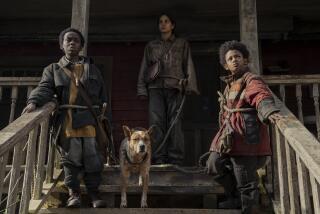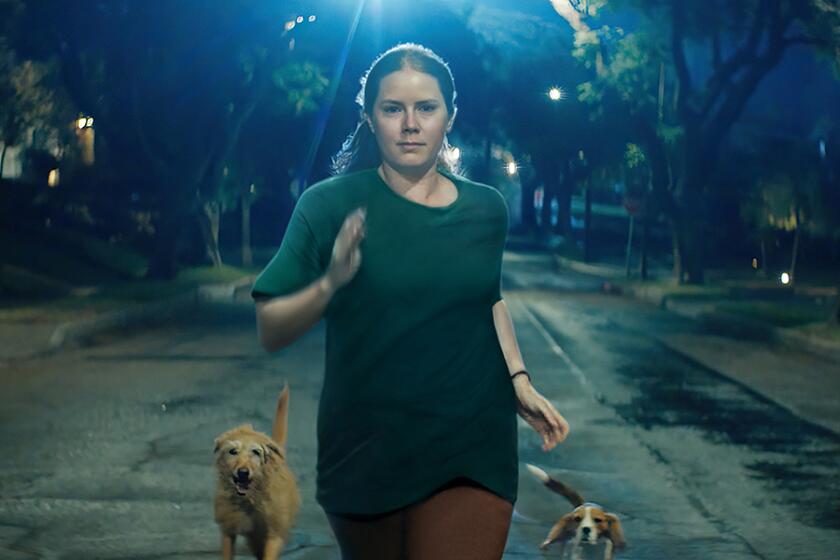The epic that could’ve been
“The Painted Veil” is a story of gruesome revenge exacted with bloodcurdling politeness. Other things happen in it too. There is growth and redemption, incredible scenery and beautiful piano solos. But a mild-mannered English bacteriologist who drags his frivolous young wife to a remote Chinese village in the grips of a cholera epidemic as payback for her affair with a vice consul -- it’s just the kind of story that naturally pricks up the ear.
Which is why it’s strange that in bringing W. Somerset Maugham’s intensely psychological novel to the screen for the third time (the first two adaptations starred Greta Garbo, in 1934, and Eleanor Parker, in a 1957 stinker called “The Seventh Sin”), director John Curran and screenwriter Ron Nyswaner remain at a British remove, as if finding it too, too beastly to pry into the whole sordid business. The handiest explanation is that the project really belongs to its star, Edward Norton, who as a producer worked for years to bring it to fruition and may have been reluctant to play the desperate weirdo.
It’s 1925, and Kitty (Naomi Watts), a pretty society girl drifting into embarrassing spinsterhood (according to her rapacious mother), marries a shy scientist named Walter Fane (Norton) just to settle the business. Fane works in a government lab in China and whisks Kitty off to Shanghai (changed from Hong Kong in the novel for production reasons) as well as a bacteriologist can be expected to whisk anyone anywhere. We never get to judge his whisking skills, though, because the major developments in the story are dispatched with such clinical expediency they’re practically redacted to a clerk. Kitty meets Walter, he proposes. Kitty overhears her mother disparaging her prospects. Cut to Shanghai. Kitty meets the charming Charlie Townsend (Liev Schreiber) at a party, hello, that was fast. The first love scene between Charlie and Kitty also doubles as the scene in which the lovers are caught in flagrante -- it’s as though a flock has been annihilated with one stone. There’s no evidence of the lovers’ exquisite torture or cuckold’s torment, for instance, that lent “The English Patient” its inexorability and tragic dimension.
By the time Kitty and Walter get to the tiny village of Mei-tan-Fu, you aren’t very invested in the tale of spiritual redemption to come. You barely know these people.
That’s too bad, because watching it, it’s hard to see this lush and stately adaptation, shot in China by Stuart Dryburgh (“The Piano”) and scored by Alexandre Desplat, as anything other than a missed opportunity for some prime psychological spelunking into the dark regions of the soul, where Fane has pitched his tent and chained poor Kitty to the pole. We know he knows that Kitty didn’t love him when she married him. We know he knows they have nothing in common. He is interested in microscopic germ behavior; she is interested in the social goings-on of British bureaucrats in Shanghai, or macroscopic germ behavior.
If there’s a burning mystery here, it’s what, exactly, Walter is thinking when he volunteers for the Godforsaken medical post at Mei-tan-Fu, forces Kitty to come with him under threat of an ugly public scandal, then takes the arduous land route despite the ready availability of riverboats and declines to inoculate them despite the fact that cholera has wiped out the bulk of the village. Their neighbors, Deputy Commissioner Waddington (Toby Jones) and the Mother Superior (Diana Rigg) of an order of French nuns, assume the couple is so in love that they couldn’t bear to be separated. The irony isn’t lost on Kitty, but what effect it has on her isn’t really clear. Despite a few short bursts of anger, she keeps her despair in check. Thanks to the nuns, she embarks on a journey of self-discovery. Or, anyway, gets out of the house and helps with the orphans.
Either way, she comes to life, which is a wonderful thing to watch Naomi Watts do. In the movie’s best scene, she gently chides Walter, reminding him that she’s human and consequently makes mistakes. Presumably, she’s letting him know that she can’t be studied, predicted or contained like his bacterium friends. The opening credits are a lovely optical blend of at least two recurring symbols in the story, tiny organisms swirling under a microscope and flowers blooming and dying, but a little narrative device might have gone a long way in adding texture to the story. A tragic love story set against massive social upheaval ... the rise of a nationalist China....
“The Painted Veil” has all the elements in place to be a great epic, but it fails to connect, to paraphrase Maugham’s contemporary E.M. Forster, the prose with the passion. It’s impeccable, but leaves you cold.
“The Painted Veil.” MPAA rating: PG-13 for mature sexual situations, partial nudity, disturbing images and brief drug content. Running time: 2 hours, 5 minutes. Exclusively at Pacific’s ArcLight, 6360 W. Sunset Blvd., Hollywood, (323) 464-4226, and Landmark’s Westside Pavilion, 10800 Pico Blvd., Los Angeles, (310) 281-8223.
More to Read
Only good movies
Get the Indie Focus newsletter, Mark Olsen's weekly guide to the world of cinema.
You may occasionally receive promotional content from the Los Angeles Times.










